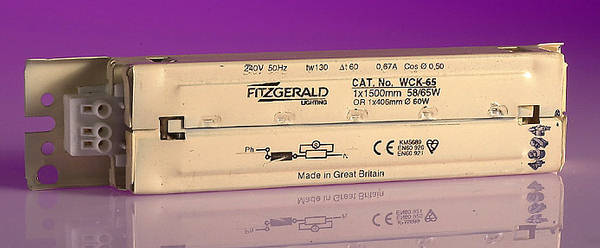Actually found ballast (now completely disconnected) was 65W so no real wonder thin 58W tubes only lasted for 4 months.
I would doubt that the difference between 58W and 65W (appreciably less than the permitted range of supply voltage variation) would make any noticeable difference. In fact, most/all 'magnetic' ballasts I have seen in recent times are described as 58W/65W ... for example:
Kind Regards, John
All I can say is the thin 58W tubes did not last long. Problem is 4 months v 4 years is hard to show problem is really down to tube to ballast compatibility. This is even harder when the sample is one. Answer will be in 4 years time when I can say if the £17.09 for LED tube was worth it. At 100 lumen per watt the energy saving will not really pay for the change.
One has to consider the cost of borrowing the £17.09 to replace the tube compared with the £3 to buy a 58W fluorescent over the life of the tube. But also one has to consider the problems associated with replacing the tube. For me that was a 10 mile trip to
Wickes only to be told they don't do thick tubes, I then tried other outlets ending up with electrofix which had the LED version in stock. (
Screwfix to non plumbers or electricians) So I had to decide new fitting or LED tube.
To my mind swapping tubes and starters every 4 months is not really an option. So either swap the fitting or use LED. I would agree not easy and in my case it involved her in draws who was given the option of selecting a completely new fitting. Due to my disability the question was who would fit the new fitting?
So it was £17.09 for LED or what ever an electrician would charge for new fitting. OK that could be my son so no charge, but question then was when. So for me change to LED was the most cost effective option.
So for me it was best option. Clearly for others it may be not best option which was why I started the thread. Having to alter wiring may mean non electrical engineers may find this option a problem. Even I had to look twice at the diagrams and decide which method to adopt. I still have no idea what the replacement starter does. Maybe a fuse or maybe something completely different?
Hence the thread. Does anyone really know what the replacement starter does?



